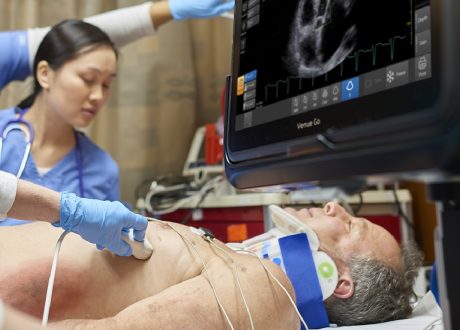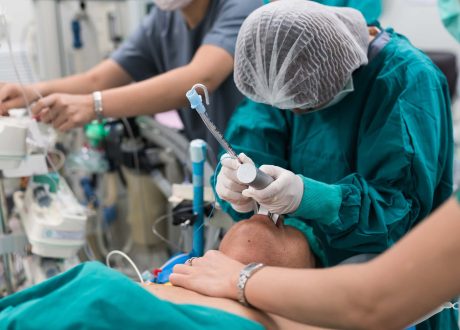September 25, 2024
Written by Megan Hilbert

AI-enabled ultrasound devices are able to accurately estimate gestational age (GA) between 14 and 27 weeks when employed by novice users. This is particularly of importance in resource poor settings.
Blind sweeps for baby
The World Health Organization (WHO) recommends that all pregnant patients receive at least one ultrasound exam prior to 24 weeks. This can be particularly difficult in LMIC (low- and middle-income countries) where both the equipment and a practiced sonographer can be hard to come by. This was a prospective diagnostic accuracy study run on viable, singleton pregnancy patients, less than 14 weeks gestation in mothers with a BMI < 40 and no known fetal anomaly from Zambia and North Carolina. A baseline GA was established via credentialed sonographers via transvaginal crown-rump length (CRL) (defined as study standard). Patients then underwent a series of 10 second blind sweeps by novice sonographers at the index visit (primary evaluation, < 28 weeks gestation). This same method of blind sweep was employed at a secondary (28 0/6 to 36 6/7 weeks) and tertiary (37 0/6 to 40 6/7 weeks) visit as well. Primary outcome was the difference in mean absolute error (MAE) between the index test and the study standard. Secondary outcome was difference between MAE during the secondary and tertiary windows.
At the primary evaluation, the index test MAE (SE) was 3.19 (0.13) days compared to 3.03 (0.12) days for the study standard (difference 0.16, 95%CI -0.14 to 0.45 days) and, therefore, was considered equivalent as it fell within the predefined range of -2 to 2 days established by the researchers. In the secondary window, the index test MAE (SE) was 6.07 (0.26) days with the study standard being 7.12 (0.30) days. This resulted in a difference of -1.06 (95%CI -1.72 to -0.40) days, which also met equivalence. This equivalence did not hold in the tertiary time frame.
Limitations of this study include that this was completed on singleton pregnancies, in relative non-obese patients, and in those with no defined fetal anomalies. Also concerning is that novice sonographers may be unable to identify abnormalities, meaning that the AI would likely perform poorly in those cases and result in grossly abnormal estimates.
How will this change my practice?
Moral: This deep learning model can accurately estimate GA in patients less than 37 weeks of gestation with blind sweeps alone, obviating the need for a high-specification machine or credentialed sonographer. Caveat: This is great as long as the pregnancy is relatively uncomplicated. Given that I have previous training, I would definitely be interested in trying this AI at my rural community sites, but I would be hesitant in trusting it implicitly for those who have no prior ultrasound experience.
Editor’s note: I’m solidly in the “blind squirrel” category when it comes to ultrasound. This use of AI is very exciting for those of us for whom most of bedside ultrasonography is kind of a “blind sweep.” ~Clay Smith
Source
Diagnostic Accuracy of an Integrated AI Tool to Estimate Gestational Age From Blind Ultrasound Sweeps. JAMA. 2024 Aug 1. doi: 10.1001/jama.2024.10770. Epub ahead of print. PMID: 39088200.









